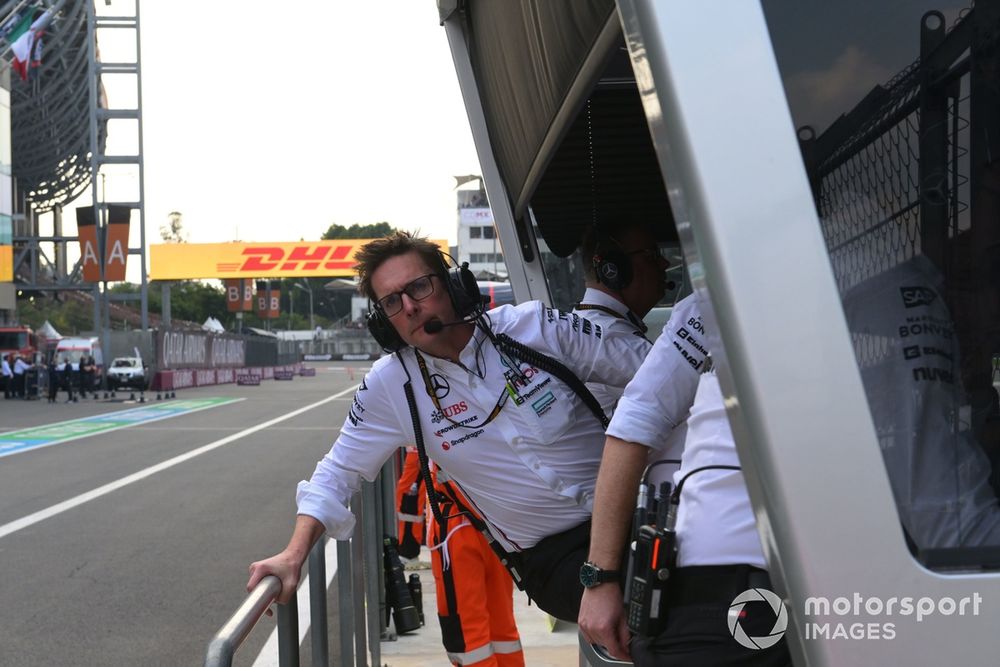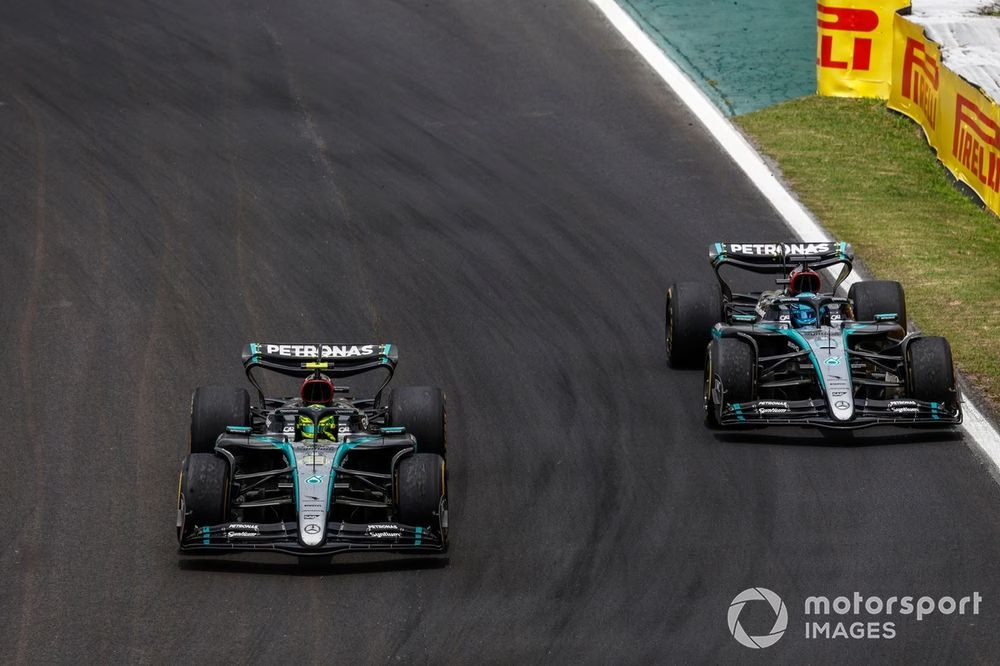Mercedes is set to use the final Formula 1 races of the season to gain further understanding of its weaknesses, having accepted it will finish fourth in the constructors’ standings.
The Silver Arrows displayed a turn in fortunes mid-season and after a winless 2023 picked up three race victories during the summer.
George Russell capitalised on contact between Max Verstappen and Lando Norris to win in Austria, before Lewis Hamilton took two race wins in Britain and Belgium, but the team has failed to continue that form into the end of the campaign.
Although Russell initially led early in the wet conditions at Interlagos last time out, he fell to fourth after pitting before the red flag to extend a run of races without a podium dating back to the September’s Azerbaijan GP, when Russell inherited third after Carlos Sainz and Sergio Perez‘s late tangle.
With the gap to Red Bull in third now 162 points, and having seen its struggles lie in similar areas since the dawn of the ground-effect era, trackside engineering director Andrew Shovlin insisted the team would now focus on how to get on top of those issues for 2025 and the final year of the current rule cycle.
“The main thing in terms of learning is that the corners that we are weak in are still the same ones. It is the interconnected, slow corners. That is normally where we trip up,” explained Shovlin.
Lewis Hamilton, Mercedes F1 W15, George Russell, Mercedes F1 W15
Photo by: Zak Mauger / Motorsport Images
“Going into the weekend, we certainly had sector two in Brazil, which has a lot of those corners, on our radar as an area that we might struggle.
“The big focus in these remaining races for us is learning what we can. We are in a position in the championship where we cannot challenge in front of us. It is very unlikely we are going to see any challenge from behind.
“Our focus has very much shifted to learning what we need to this year to apply to next year in order to get on top of those issues.”
Despite its struggles in the rain during the Brazilian weekend, Shovlin pointed to the advantages of being able to run the car in the wet as part of its learning process ahead of the new campaign.
“In Brazil, it was useful having that wet running because you want to get a read on the car in the wet,” he added. “There is always a few wet quali and race sessions over the year. It was reassuring to see that the pace in those conditions was decent.

Andrew Shovlin, Trackside…
Click Here to Read the Full Original Article at Motorsport.com – Formula 1 – Stories…

